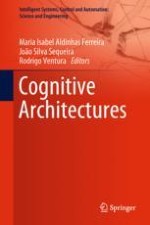2019 | OriginalPaper | Buchkapitel
Constructive Biology of Emotion Systems: First- and Second-Person Methods for Grounding Adaptation in a Biological and Social World
verfasst von : Chrystopher L. Nehaniv
Erschienen in: Cognitive Architectures
Aktivieren Sie unsere intelligente Suche, um passende Fachinhalte oder Patente zu finden.
Wählen Sie Textabschnitte aus um mit Künstlicher Intelligenz passenden Patente zu finden. powered by
Markieren Sie Textabschnitte, um KI-gestützt weitere passende Inhalte zu finden. powered by
